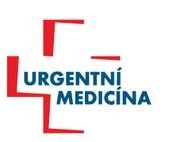INTRODUCTION
INTRODUCTION
Jana Šeblová
Editorial
CONCEPTION, MANAGEMENT, ORGANIZATION
Emergency Medical Services in the Czech Republic
Marek Slabý
Abstract
Emergency medical services (EMS) are integral part of health care system in the Czech Republic and their role in providing prehospital care is clearly defined. EMS´ have an important role in state´s health and safety policy but they are also irreplaceable component of regional health care system. There is EMS Law 374/2011 defining basic activity and subseqent legislation ensures organizational integrity of emergency response as well as unified equipment and personal requirements. There is multiple funding of EMS systems as regional administration, health insurance and state with contribution for disaster preparedness are all involved. Organization of prehospital care system in the Czech Republic is of high quality and guarants both everyday health care (more than 1 million emergency calls in CR per year) and disaster preparedness. EMS is one of three basic services of Integrated Resuce System.
CLINICAL TOPICS AND RESEARCH
Comparison of the effectiveness of care provided by a physician staffed and a non-physician staffed pre-hospital response teams in patients with acute coronary syndromes with ST segment elevation
Libor Seneta, Jiří Mašek, Anatolij Truhlář
Abstract
Introduction: The appropriate pre-hospital care provided to patients suffering from ST segment elevation acute myocardial infarction (STEMI) can reduce time to percutaneous coronary intervention (PCI) and minimize complications. However, there is a medical personnel with different level of education and competences involved in pre-hospital care in the Czech Republic.
Objective: The aim of the study was to compare effectiveness of pre-hospital care provided by a physician staffed and a non-physician staffed response teams in patients with STEMI.
Methods: Retrospective analysis of consecutive patients treated pre-hospitally with STEMI during 2011–2013. Direct transports for PCI, therapeutic interventions and survival rates until hospital admission in case of out-of-hospital cardiac arrest (OHCA) were evaluated as quality indicators.
Results: In total, 625 STEMI patients were treated by pre-hospital system, of which 385 (61,0 %) were treated by a physician staffed response teams and 240 (38.4 %) by a non-physician staffed teams. In a physician treated group, 354 (92.0 %) patients were triaged directly for PCI and 373 (96.9 %) received antiplatelet and antithrombotic treatment. In a non-physician treated group, 217 (90.4 %, P = 0.507) were triaged for PCI and 225 (93.8 %, P = 0.061) received antiplatelet and antithrombotic drugs. Among 575 patients referred directly to PCI, 19 (3.3 %) developed OHCA. 11 of 14 patients resuscitated by physicians survived until hospital admission compared to 4 of 5 resuscitated in a non-physician treated group.
Conclusion: In evaluated endpoints of pre-hospital treatment of STEMI we did not prove lower quality of care provided by a non-physician staffed emergency medical service.
How do we provide cardiopulmonary resuscitation II
Gabriel Tomko
Abstract
Rescuers´ competition RESCUE LESNICA has a long tradition, it is popular and frequently joined by the rescuers. Author of the article presents an analysis of the 2nd Slovak Championship in CPR. It is a competition of two-memebrs´teams composed of a student, an emergency medical technician, a paramedic, a dispatcher and/or a physician. 10 minute CPR with artificial pulmonary ventilation using a bag valve mask is evaluated. The goal is to verify the optimalisation of the CPR performed by healthcare professionals working in prehospital emergency health care. Individual steps which are evaluated during competition are processed in tables and graphs that are in the second part of the paper compared with the last year´s championship results. Both first and the second year of the competition had shown significant differences between the teams.
Invasive meningococcal diseases – intital diagnostics, treatment and transport of patients
Roman Sviták
Abstract
Main principles of diagnosis, therapy and prehospital transport of patients with suspection of invasive meningococcal disease (IMO) are listed in the presented article. The paper is based on standard of prehospital care in which the task Emergency Medical Service (EMS) was defined and pointed out, especially ambulance teams with emergency physician as rapid response teams. The role of prehospital care providers is crucial due to high mortality of the disease.
ETHICS, PSYCHOLOGY, LAW
Communication with psychotic patient in the prehospital care
Anna Palánová, Tibor A. Brečka
Abstract
This article deals with communication with psychotic patiens in prehospital care. Summary of important facts of psychology of communication are summarised in the introduction and especially recommmendations concerning safety of the prehospital providers are pointed out according to verbal and nonverbal communication. The paper presents conculusions based on qualitative analyses of case studies of paramedics who have experience with patients with required diagnoses (F20 – F29 according to ICD-10). Futher recommendations for communication with psychotic patiens mainly in prehospital care are listed in the end of the article.
INFORMATION
Professor William Gunn – an important anniversary
Leo Klein
News from CzMA JEP-Society for Emergency and Disaster Medicine
Jana Šeblová
2015 Report on Non-physician section of Society for Emergency and Disaster Medicine
Jiří Kodet, David Peřan
